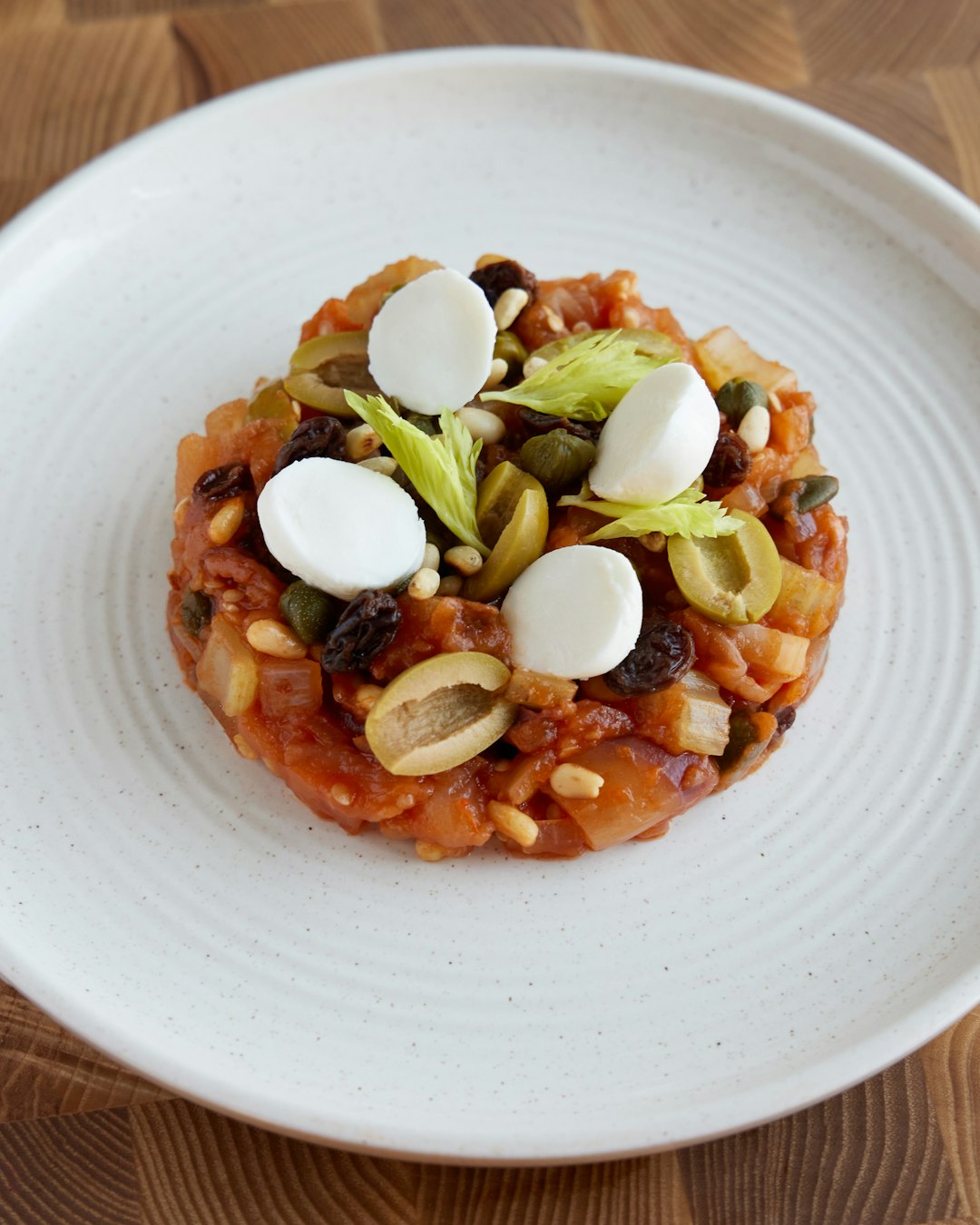Caponata
For those with a penchant for the exotic, caponata can be modified to contain a variety of ingredients, ranging from bell peppers and raisins to zucchini and chili peppers. Each addition to the dish can bring out new textures and balance the sweetness, saltiness, and sourness present in the stew.
Eaten as a side dish, caponata is a delicious accompaniment to grilled meats, fish, or vegetables. It can also be served as a main course and is particularly fabulous when spooned over poached eggs or pasta. While recipes may vary depending on the region, it's common to find caponata flavored with floral fragrances of cinnamon or cloves. For a unique twist, some cooks even add a dash of cocoa powder to the stew.
Regardless of how it's prepared, caponata is a true jewel of Italian cuisine and never fails to bring a little taste of Sicily to any dinner table. Whether enjoyed warm or cold, its myriad of ingredients combine to form a succulent symphony of sweet, salty, and sour. Bon Appétit!
Caponata recipes
Amazing Caponata recipes sourced from the web.
The origin of Caponata
One of the most beloved dishes in Sicily, Italy, is Caponata. The origin of this unique side dish remains a subject of debate amongst culinary historians around the world. Despite the uncertainty, one thing is known for sure: the succulent mix of eggplant, tomato, capers, and olives has brought delight to countless Italian tables since time immemorial.
It’s believed that Caponata dates back to at least the 17th century, though some posit the dish may have been cooked up even earlier. Archival records and the writings of early Italian gastronomes lead many experts to conclude that the recipe for this savory dish first emerged in Palermo, the capital city of Sicily.
Over time, regional variations of the classic dish began to develop. In certain parts of the island, artichokes were added to the mix. Elsewhere, almonds and pine nuts were included. But no matter where it was served, Caponata was consistently made with fresh vegetables gently simmered in olive oil.
Some say the name Caponata derives from the Angevin dialect of French. Others maintain that the term may be a derivation of the Sicilian verb, "caponari," which translates to “to chop into pieces,” referring to the diced vegetables that are the hallmark of any good Caponata recipe.
Though its exact origins remain unclear, one thing is sure – Caponata has become an international favorite and a surefire sign of Sicilian tradition. Whether gobbled up on its own or served as an accompaniment to grilled fish or roasted meats, it’s impossible to deny that Caponata has provided endless gustatory pleasures for centuries.
Types of Caponata

